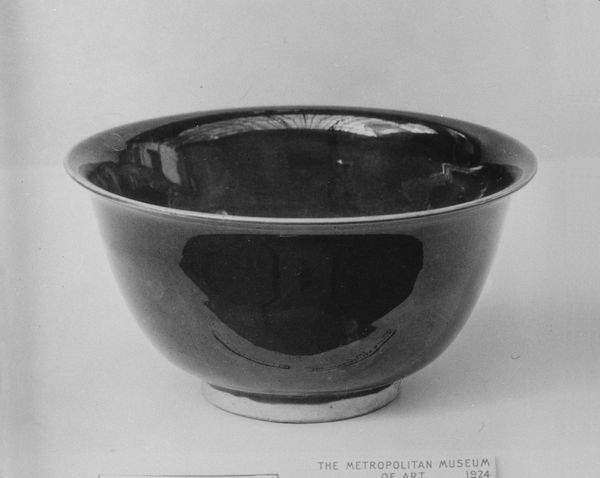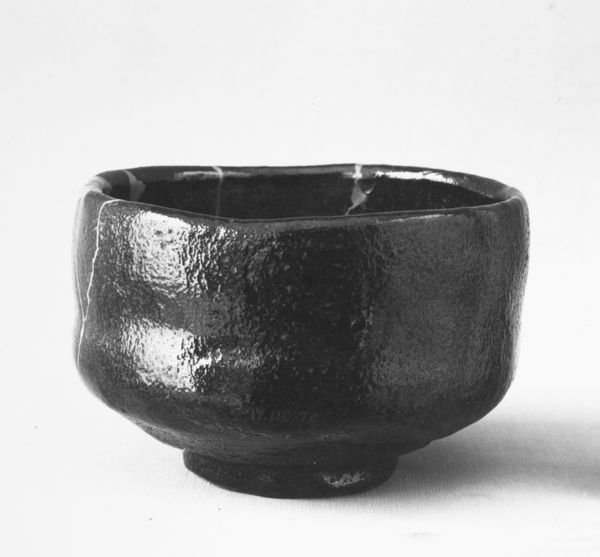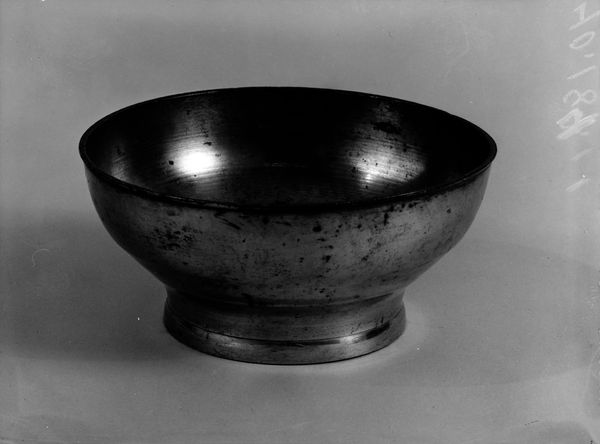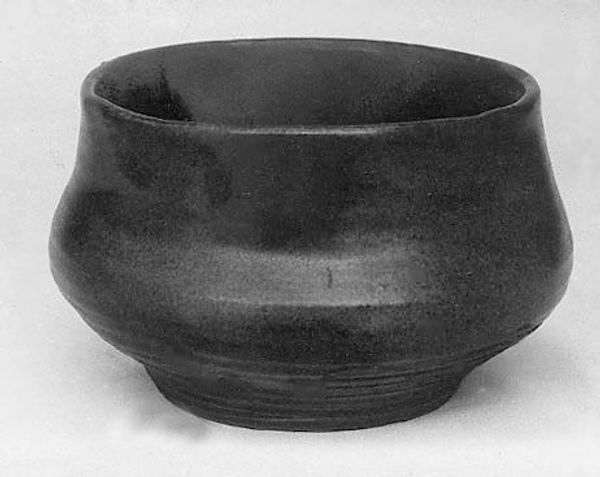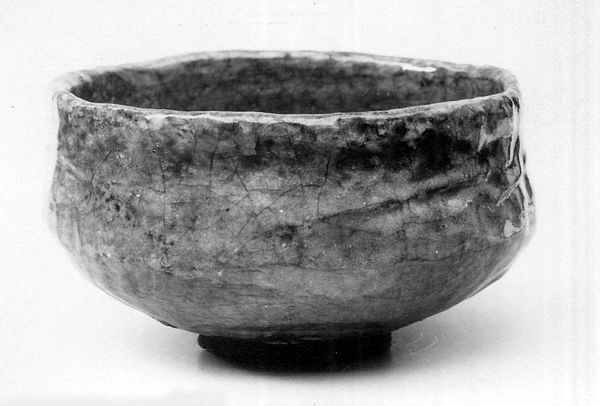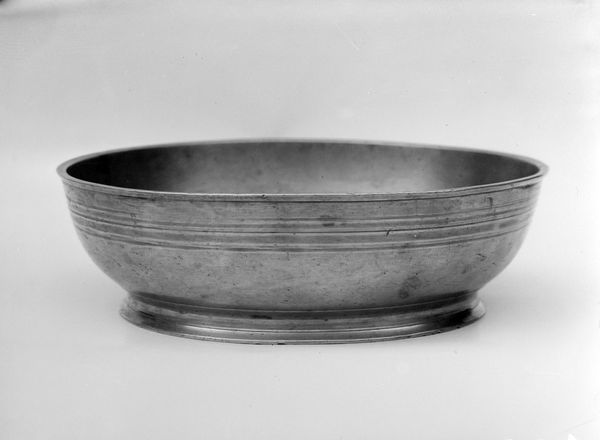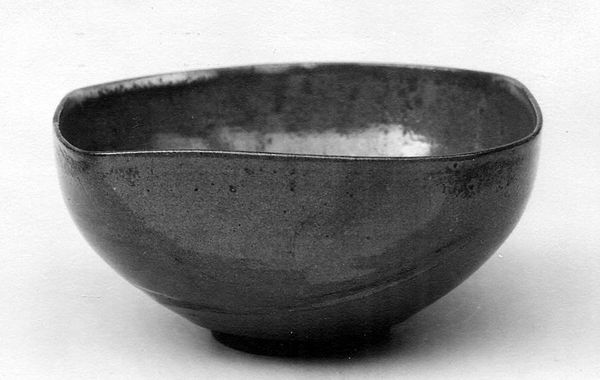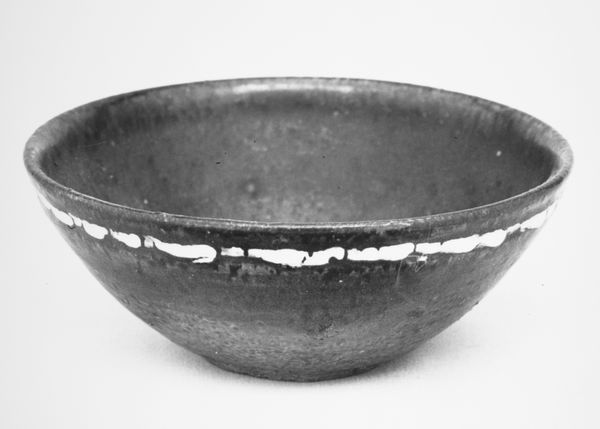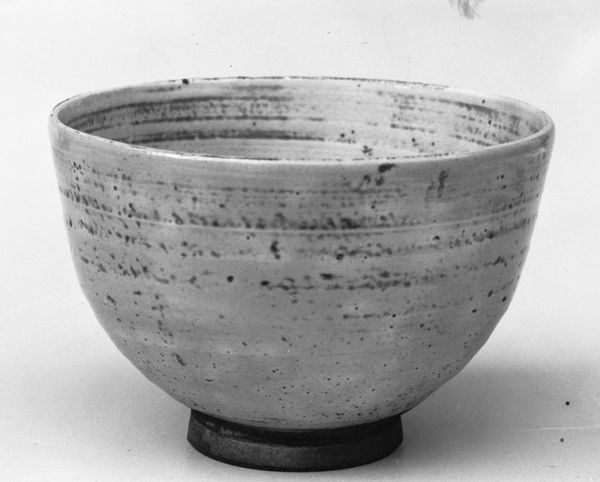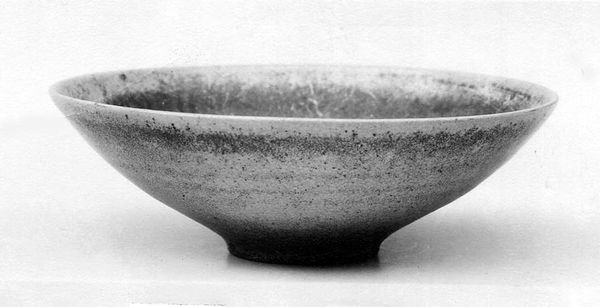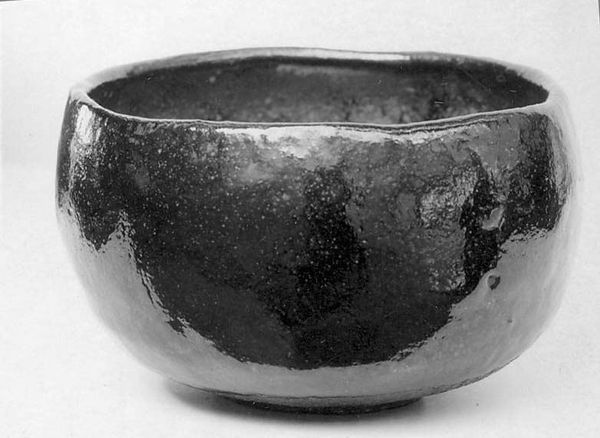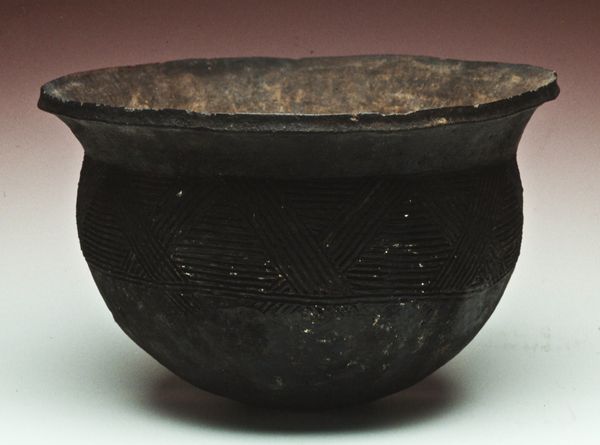
ceramic, earthenware
#
asian-art
#
ceramic
#
earthenware
#
stoneware
Dimensions: H. 2 1/2 in. (6.4 cm); Diam. 5 in. (12.7 cm)
Copyright: Public Domain
Editor: Here we have a ceramic teabowl made sometime between 1870 and 1890 by Kichizaemon. The surface looks coarse and unrefined. How should we understand this roughness in the context of Japanese art? Curator: That's a great starting point. Think about *wabi-sabi*, this is a key aesthetic concept in Japanese culture. The bowl’s apparent imperfections—its uneven texture and simple form—speak to the beauty found in transience and natural processes. This teabowl would likely be used in a tea ceremony, which places great emphasis on respect, purity, tranquility, and harmony. How might the bowl’s roughness engage or challenge those values? Editor: I see. So, its rough exterior wouldn't necessarily be seen as a flaw, but as a virtue, a kind of honest expression. Does this roughness invite questions about the socioeconomic position of the potter or user of the bowl? Curator: Exactly! Think about how this challenges Western ideals of perfection often associated with wealth and status. What does it mean for an object used in a ritual of harmony to embrace what some might call imperfection? Also consider how access to specific glazes, kiln technology, and other aspects of material production reflects hierarchies. Editor: It really shifts my perspective to think of this roughness as deliberate and meaningful. The teabowl's existence questions values around aesthetic beauty! Curator: Precisely. And by extension, this opens up conversations about consumerism, material culture, and the societal systems that shape our perceptions. Thanks for offering some insights into the socioeconomic factors that influence the world. Editor: This was extremely helpful; thank you! It makes you think twice about taking beauty and aesthetic concepts at face value without thinking about how people of different cultures interpret the meaning behind an artwork!
Comments
No comments
Be the first to comment and join the conversation on the ultimate creative platform.
